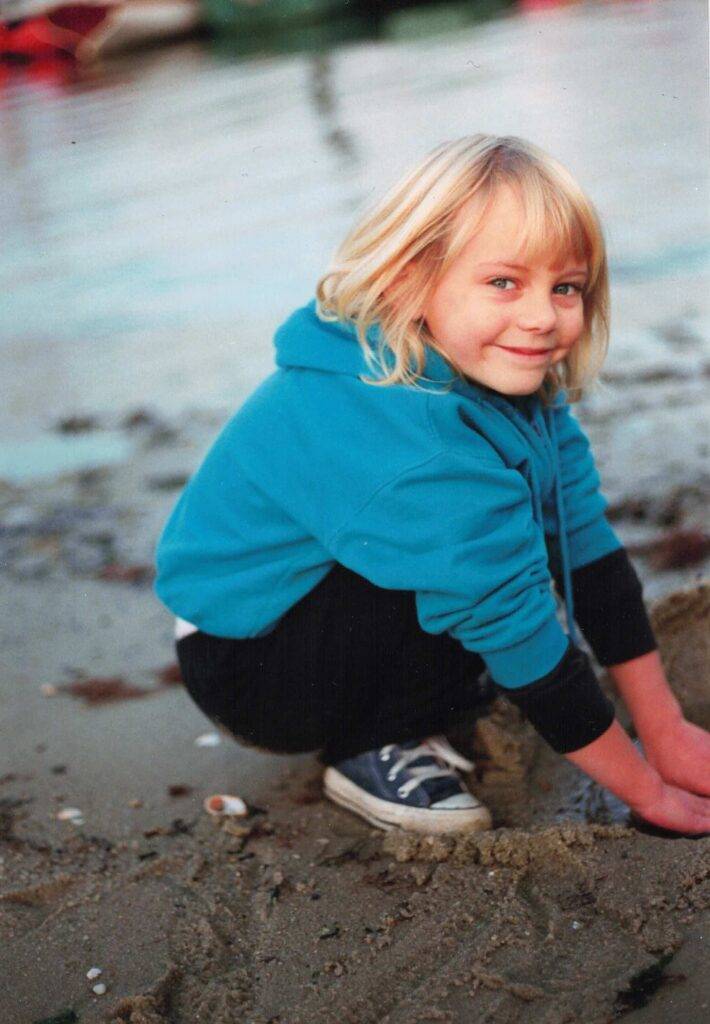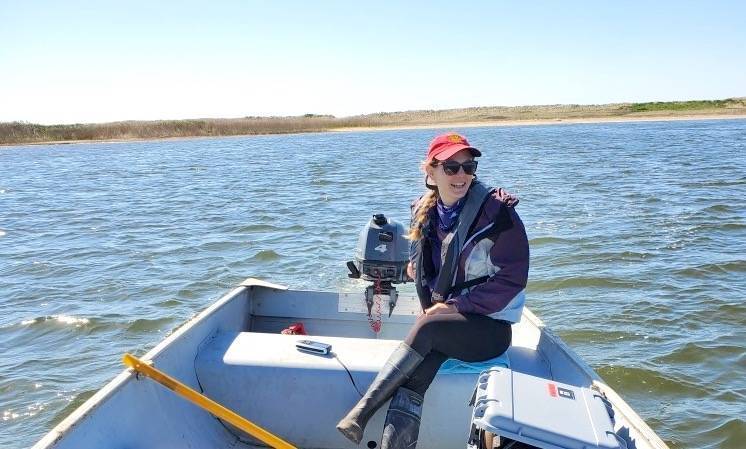On a typical day, Julie Pringle starts collecting water samples at sunrise. From the Edgartown Great Pond and Crackatuxet Cove, to the great ponds of Tisbury and Chilmark, she gathers data from May through October — top to bottom, shore to shore, and week to week. “Dissolved oxygen, temperature, salinity, turbidity, lots of different parameters that we can then use to assess the health of the pond,” Pringle said.
Pringle, 30, is the Scientific Program Director at the Great Pond Foundation, where she runs the ecosystem monitoring program. Her mission is to connect indicators of water quality to the wellbeing of the creatures and people that depend on the Edgartown Great Pond, and other Island ponds.
An Islander who attended the Tisbury School and the Martha’s Vineyard Regional High School, Pringle studied biology at Tufts University, worked for a few years at the Woods Hole Oceanographic Institution, and then got her master’s in biological oceanography from the University of Connecticut Avery Point.
“I was always just drawn to the water. I did a lot of sailing. I was at Sail MV. I worked for the Harbormaster Department in Vineyard Haven growing up,” Pringle said. “There was one school vacation where I went home, I went for a walk on the beach and I realized that this is what I want to do. I want to have a career where I can be outside and not limited to doing lab work every single day.”

Pringle joined the Great Pond Foundation on Earth Day, 2019, soon after completing her master’s thesis. “When I started, we were only looking at water quality parameters,” Pringle said. “Those are the chemical and physical qualities of the water itself. We weren’t looking at any of the biological aspects of ecosystem health. I was really interested in biodiversity, because that’s the ultimate measure of how healthy that ecosystem is.”
Thanks to a grant from the Martha’s Vineyard Community Foundation, Pringle and her colleagues are now able to sample more widely in the ponds’ web of life. A 30-foot beach seine nets fish along the shoreline, and two smaller, finely meshed nets can catch phytoplankton and zooplankton. “It’s a really exciting way to connect how water quality is impacting the species that actually live in the pond,” Pringle said.
In her days on the water, one sight in particular has emerged as Pringle’s favorite. “I love it when I see a healthy eelgrass meadow,” she said. “Just because it’s so beautiful. And you always see other species there.”
Pringle dreams of an Island where these aquatic meadows abound. “It’s such an important species because it’s a habitat for fish, shellfish, and all sorts of species that are really economically important to the Vineyard,” she said. Eelgrass is also “blue carbon” meaning it absorbs CO₂ and sequesters it in sediment.
The species is sensitive to both excess nutrients and warming temperatures, conditions that are increasingly common in the great ponds. Pringle’s job is to understand how and why these changes are occurring.
A big piece of the picture is nitrogen, especially from septic runoff. “If the Island community were able to work together to lower the amount of nitrogen in the watershed for all ponds, that would be huge,” Pringle said.
In the meantime, she goes on sampling — with fluorometers, nets, microscopes, and handheld water quality meters. She spends her summers on the water and her winters making spreadsheets and graphs for each pond’s annual ecosystem monitoring report. She’s helped by her colleague, David Bouck, and a cast of summer staff and interns.
“The Island really has such an incredible scientific community, and that’s partially why I’ve stayed here,” Pringle said. The conservation ethic of the community is also a factor. “The whole Island is supportive of the work and really wants to see not just our coastal ponds, but all our ecosystems thrive.”
Want to know more about nitrogen in our ponds? See our story “What’s So Bad About Nitrogen?”

